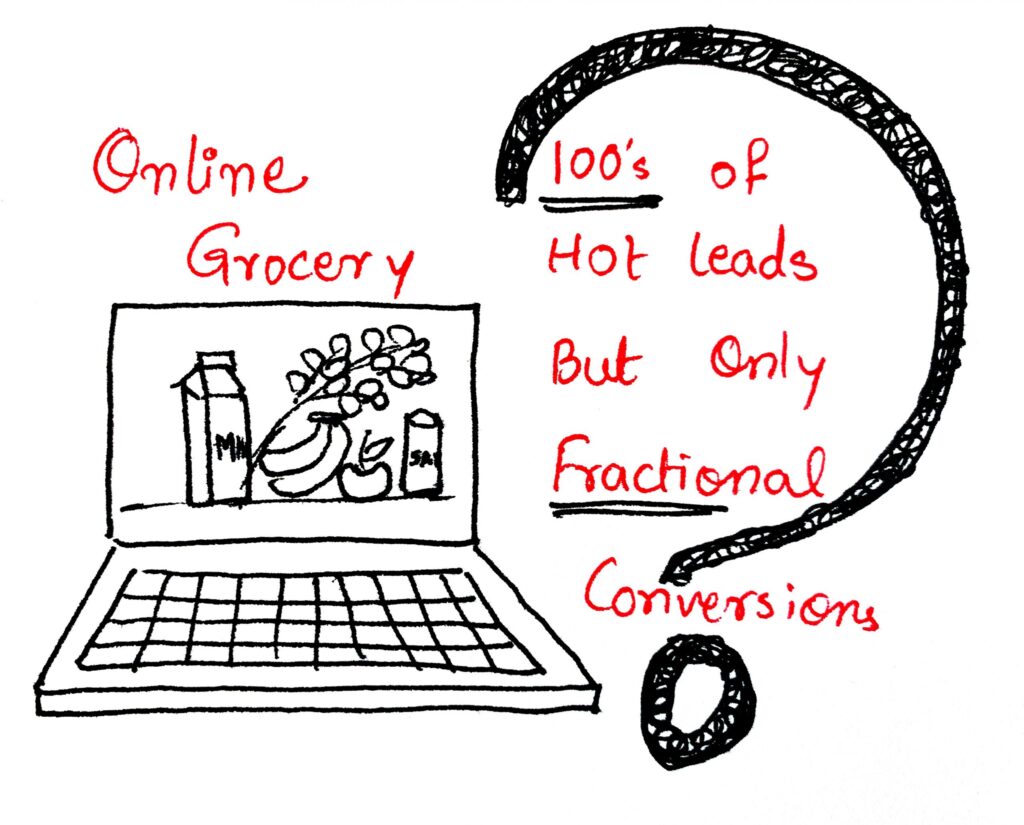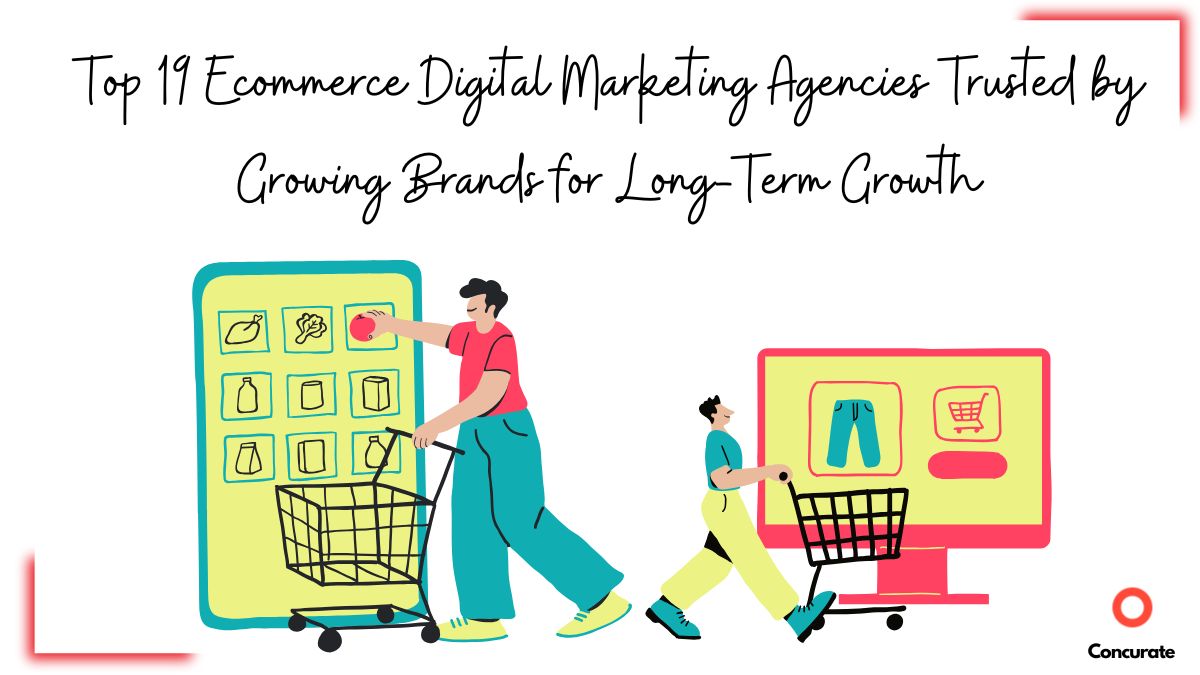Did you do your homework before opening up your online grocery store?
I am sure, You did!
But did you consider these critical factors?
- Did you put yourself in your customer’s shoes?
- Did you think about the questions and concerns they might have before buying groceries online?
You got to be an Empathetic Seller in this era.

Customer Insights Matter
To truly understand customer behavior, I spoke with 100 people across the globe about their online grocery shopping experiences.
My first question: “Do you buy groceries online? I also asked these people about things they like/dislike about online grocers they buy from. Here’s what they said:

“Yes, Aditi! We order groceries once every week from Tesco. We are on their monthly delivery subscription and pay 3.50 pounds per month. We receive our order within 24 hours in a mutually agreed time slot of 1 hour. We are happy with their service.” – Virendra, Manchester, UK
“Yes, Aditi from RedMart only ….Tried a few Indian grocers like Shivsagar, etc. but was disappointed by the quality of stuff so stopped from those” – Meera, Singapore.
“Yes, dear! I buy from BigBasket and Grofers. The best part about Bigbasket is veggies are super fresh, don’t get spoiled even after a week of sitting in the fridge. And if at all I do not like the quality of veggie they take it back without asking any question. I have also observed that Grofers does not have most of the brands I use. However, Bigbasket carries them all. Just that Grofers is comparatively cheaper for some products.” – Lavanya, Bengaluru, India.
“Yes, Aditi all the time! BigBasket is my favorite” – Priyamvada, Bengaluru, India.

“No Aditi, I don’t! I don’t trust online vendors. I like to go to a grocery store and choose the kitchen supplies myself as I am passionate about cooking. Also, the grocery store is just 2 minutes’ drive from my house. It doesn’t take too long for me. Also, we live a little far from the city so I don’t think many vendors deliver groceries here. Besides, I have only seen a few singles buying groceries online who have absolutely clear idea of what they want to buy and can easily order online. However for families, I feel requirements are different, sometimes you would want to look at the new varieties or available offers, or by looking at things in the store you would get reminded of what you want to buy?.” – Paula, Melbourne, Australia.
“No Aditi! Big Stores like Coles and Woolworths have delivery options on their websites but the delivery charges in Australia are very high. We prefer visiting the store to buy our supplies. The best part is, we directly go to farms to buy our fruits #FarmFresh.” – Says, Pramod, Perth, Australia.
“No! I have tried earlier but the packaging is very poor and expiry date issues are also there. I have tried Ondoor and Grofers!” – Rajeshwari, Indore, India.
“No, I don’t buy groceries online because I prefer seeing what I buy. I will always be worried about the quality if I buy online.” – Says, Kalyani, Melbourne, Australia.
“No! I like to purchase from small vendors for multiple reasons. First, I like to extend my indirect support to them by buying from them. Second, I can see the quality of the product I am buying. Third, having a good rapport with them makes them go the extra mile for us.” – Shikha, Bhopal, India.
“Depends, based on the situation I decide whether to buy online or from a local store. If I have a time crunch I order online. I also feel online stores lack in options and variety and are not always budget-friendly.” – Ruchika, Pune, India.
Key Questions Customers Ask Before Buying Groceries Online
My Second Question: What are the thoughts that cross your mind when you consider buying groceries online?:
- Does this website covers products in all the categories like fruits, vegetables, dairy, grains, pulses, lentils, flour?
- If I order fruits and vegetable from this website, will they pick the best quality produce and deliver it fresh?
- Will they try to sell me “expiring soon” stuff?
- Do they have a feature where I can check the expiry date of the stuff I am buying.
- Are they selling it at a higher price than the local offline vendor?
- Do they carry the brands I like?
- How will I differentiate which green chillies (from the picture) are right for me ? Do they specify mild spicy, medium spicy or too hot ? or do they tell the variety of the veggie?
- Does this store deliver in my area?
- Is it safe to use my credit card/ debit card on this website?
- Can I get stuff in smaller quantities or will I have to buy their smallest packaging which is big for me?
- Will I be home when they deliver ?
- Will they ask for a minimum order for delivery? Is the minimum order too high?
- How do they pack the groceries?
- Will the items like milk, butter, cheese, curd get spoilt on the way to delivery?
Addressing Pain Points with a Strong Business Model
Your online store doesn’t need to solve all 14 concerns at once. Instead, focus on your strengths and build around them.
Is your strength (Just giving out a few examples):
- In sourcing the finest quality produce? Is the produce that you bring to the table has the ability to get publicised by your happy customers being your evangelists? Would your customer say this to their friend : “Next time you want to buy xyz. Try Brand A of xyz available at abc website(your store). It’s just amazing.” ?
- In Logistics? Are you already in a logistic business and looking for diversification? Or are you an expert at handling logistics? Or do you have a breakthrough idea like that of Instacart to hire personal shoppers to handle logistics?
- In organic or regional products?
Once you have analysed your strengths. It’s time to define your target audience. To do so you need to find out the hassles of buying groceries from local marts and thus attract your customers (Just giving you a few examples).
| Pain Points | Target Audience |
| 1. People who hate standing in a long queue before check out. People who have time Crunch: No time to go and buy the groceries. Or the people who do not have grocery stores next door and need to walk a minimum of 800 m to reach the nearest grocery store. | Clearly your target audience is “Tech Savvy Shoppers” who would want to spend time in the activity of their interest rather than visiting to a local grocery store. This is the reason why BigBasket is really popular in Bengaluru, The Information Technology Hub of India. |
| 2. Unavailability of organic or non-GMO products, or healthy foods at local marts. | Highly motivated health conscious people |
| 3. Unavailability of regional groceries (e.g. Indian, Chinese, Malay etc. ) for foreigners living in your country. | Foreigners in your country |
How Successful Grocery Stores Innovate
Many companies have found innovative ways to solve customer pain points and optimize grocery delivery. Here’s how some of the most successful ones have done it:
Instacart – Crowdsourced Deliveries for Quality Control
- Instead of hiring a dedicated delivery team, Instacart uses crowdsourced personal shoppers to fulfill orders.
- When a customer places an order, a nearby shopper goes to the market, picks up the items, and delivers them.
- This model is similar to Uber/Grab but for groceries.
- It ensures better product selection since trained shoppers handpick fresh produce instead of relying on automated fulfillment centers.

GrabFresh – Leveraging a Transport Network for Grocery Delivery
- Grab started as a ride-hailing app, later expanding into food delivery, parcel delivery, and now groceries.
- By leveraging its existing transport network, it entered grocery delivery efficiently.
- Currently, GrabFresh operates in Bangkok and Samut Prakan, addressing common grocery delivery pain points with faster fulfillment and reliability.
- Their website directly tackles customer concerns like freshness, delivery reliability, and price transparency before they even arise.

Amazon Prime Now (Singapore) – Insulated Packaging for Freshness
- Amazon Prime Now excels in ensuring freshness for dairy and frozen products.
- They use insulated bags with cold gel packs to maintain low temperatures, preventing spoilage.
- They also simplify repeat purchases with a purchase history feature—allowing customers to reorder frequently bought items with just one click.

Thrive Market – A Subscription-Based Niche Grocery Store
- Thrive Market focuses on organic, non-GMO, and healthy foods.
- Their subscription model creates a sense of customer loyalty while also ensuring repeat business.
- Thrive also gives back to the community—offering free memberships to families in need, increasing customer goodwill and brand loyalty.
- Their biggest challenge? Competing with free delivery options from other retailers. However, many customers are willing to pay extra for premium-quality organic groceries.



Each of these businesses found a niche, understood customer pain points, and built their models around solving them efficiently.
What If You Have Traffic but Low Conversions?
Let’s say your e-commerce store gets 20,000 monthly visitors, but only 1,000 make a purchase. That’s a 5% conversion rate—a serious concern.
Analyze your sales funnel step by step:
- Visitors land on your website
- They search for products
- They check ratings and reviews
- They review pricing and shipping details
- They check delivery timelines
- They make a purchase
Now gather the data for each of these steps. To explain how to find the problematic stage of sales cycle I have picked up some hypothetical data. You can do the similar exercise with real data from your website. The problematic stage would be the one that sees the biggest dip. Now take a look at the following graph.

According to this graph, the highest dip is between first two stages. “Visiting you Website” and “Searching for products”. Clearly people are not able to find the products they are looking for. Check your search query data to fill the gap.
Even after doing all this, you feel stuck, not just in grocery business, but any other business Concurate is there to help you.
Pro tip: If you need 30 standout SaaS growth hacks to attain double the growth for your SaaS business, fill out the form below!
At Concurate, we specialize in building content-driven strategies that drive conversions. Whether it’s customer acquisition, sales enablement, or brand storytelling, we help businesses create content that sells.
If your organization needs a content marketing strategy that drives real business growth, let’s connect over a short call. Block our calendar today!







